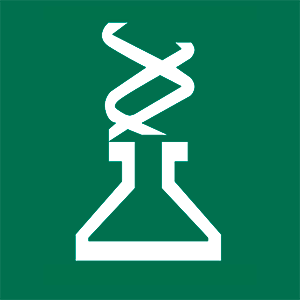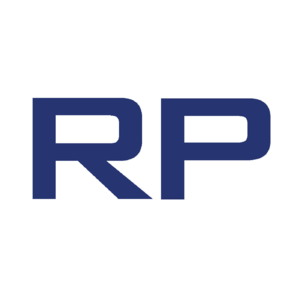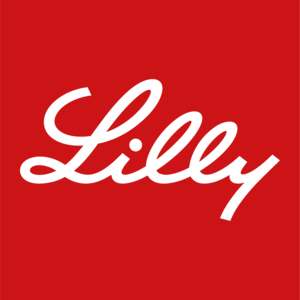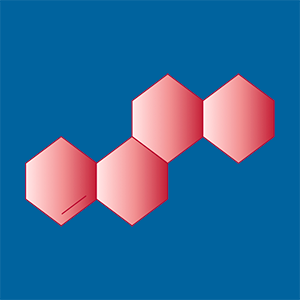
Organon (OGN)
We’re skeptical of Organon. Its plummeting sales and returns on capital show its profits are shrinking as demand fizzles out.― StockStory Analyst Team
1. News
2. Summary
Why We Think Organon Will Underperform
Spun off from Merck in 2021 to create a company dedicated to addressing unmet needs in women's health, Organon (NYSE:OGN) is a global healthcare company focused on improving women's health through prescription therapies, medical devices, biosimilars, and established medicines.
- Performance over the past five years shows each sale was less profitable as its earnings per share dropped by 17.6% annually, worse than its revenue
- Sales are projected to tank by 5.1% over the next 12 months as demand evaporates
- The good news is that its disciplined cost controls and effective management have materialized in a strong adjusted operating margin


Organon falls below our quality standards. There are better opportunities in the market.
Why There Are Better Opportunities Than Organon
High Quality
Investable
Underperform
Why There Are Better Opportunities Than Organon
Organon is trading at $7.10 per share, or 1.8x forward P/E. This sure is a cheap multiple, but you get what you pay for.
We’d rather pay up for companies with elite fundamentals than get a bargain on weak ones. Cheap stocks can be value traps, and as their performance deteriorates, they will stay cheap or get even cheaper.
3. Organon (OGN) Research Report: Q3 CY2025 Update
Pharmaceutical company Organon (NYSE:OGN) reported revenue ahead of Wall Streets expectations in Q3 CY2025, with sales up 1.3% year on year to $1.60 billion. On the other hand, the company’s full-year revenue guidance of $6.23 billion at the midpoint came in 1% below analysts’ estimates. Its non-GAAP profit of $1.01 per share was 8.5% above analysts’ consensus estimates.
Organon (OGN) Q3 CY2025 Highlights:
- Revenue: $1.60 billion vs analyst estimates of $1.57 billion (1.3% year-on-year growth, 2% beat)
- Adjusted EPS: $1.01 vs analyst estimates of $0.93 (8.5% beat)
- Adjusted EBITDA: $518 million vs analyst estimates of $480 million (32.3% margin, 7.9% beat)
- The company reconfirmed its revenue guidance for the full year of $6.23 billion at the midpoint
- Operating Margin: 15.2%, down from 21.4% in the same quarter last year
- Market Capitalization: $1.76 billion
Company Overview
Spun off from Merck in 2021 to create a company dedicated to addressing unmet needs in women's health, Organon (NYSE:OGN) is a global healthcare company focused on improving women's health through prescription therapies, medical devices, biosimilars, and established medicines.
Organon's business is structured around three key portfolios. Its women's health division, which generates about 27% of total revenue, includes contraceptive products like Nexplanon (a long-acting reversible contraceptive implant) and NuvaRing (a vaginal contraceptive ring), as well as fertility treatments such as Follistim AQ. The company also markets the Jada System for treating postpartum hemorrhage and Xaciato for bacterial vaginosis.
The biosimilars portfolio includes lower-cost alternatives to popular biologic medications across immunology and oncology. These include Hadlima (biosimilar to Humira), Brenzys (biosimilar to Enbrel), Renflexis (biosimilar to Remicade), and oncology treatments Ontruzant (biosimilar to Herceptin) and Aybintio (biosimilar to Avastin). Organon has commercialization rights to these products in various global markets through partnerships with companies like Samsung Bioepis and Henlius.
The established brands segment comprises mature medications across therapeutic areas including cardiovascular (Zetia, Vytorin), respiratory (Singulair, Nasonex), dermatology (Diprosone, Elocon), bone health (Fosamax), and non-opioid pain management (Arcoxia, Diprospan). While many of these products have lost patent protection, they continue to generate significant cash flow, particularly in international markets where approximately 76% of the company's total revenue originates.
Organon distributes its products through various channels including drug wholesalers, retailers, hospitals, clinics, and managed healthcare providers across more than 140 countries and territories. The company reinvests cash flows from established brands to fund research and development in women's health, including partnerships to develop new treatments for conditions like endometriosis and polycystic ovarian syndrome.
4. Branded Pharmaceuticals
Looking ahead, the branded pharmaceutical industry is positioned for tailwinds from advancements in precision medicine, increasing adoption of AI to enhance drug development efficiency, and growing global demand for treatments addressing chronic and rare diseases. However, headwinds include heightened regulatory scrutiny, pricing pressures from governments and insurers, and the looming patent cliffs for key blockbuster drugs. Patent cliffs bring about competition from generics, forcing branded pharmaceutical companies back to the drawing board to find the next big thing.
Organon's competitors vary by business segment. In women's health, it competes with companies like Bayer, AbbVie, and CooperSurgical. In biosimilars, competitors include Amgen, Pfizer, and Novartis. For established brands, Organon faces competition from generic manufacturers and companies with similar portfolios like Viatris.
5. Economies of Scale
Larger companies benefit from economies of scale, where fixed costs like infrastructure, technology, and administration are spread over a higher volume of goods or services, reducing the cost per unit. Scale can also lead to bargaining power with suppliers, greater brand recognition, and more investment firepower. A virtuous cycle can ensue if a scaled company plays its cards right.
With $6.30 billion in revenue over the past 12 months, Organon has decent scale. This is important as it gives the company more leverage in a heavily regulated, competitive environment that is complex and resource-intensive.
6. Revenue Growth
Reviewing a company’s long-term sales performance reveals insights into its quality. Any business can experience short-term success, but top-performing ones enjoy sustained growth for years. Over the last five years, Organon’s demand was weak and its revenue declined by 1.7% per year. This was below our standards and is a sign of lacking business quality.
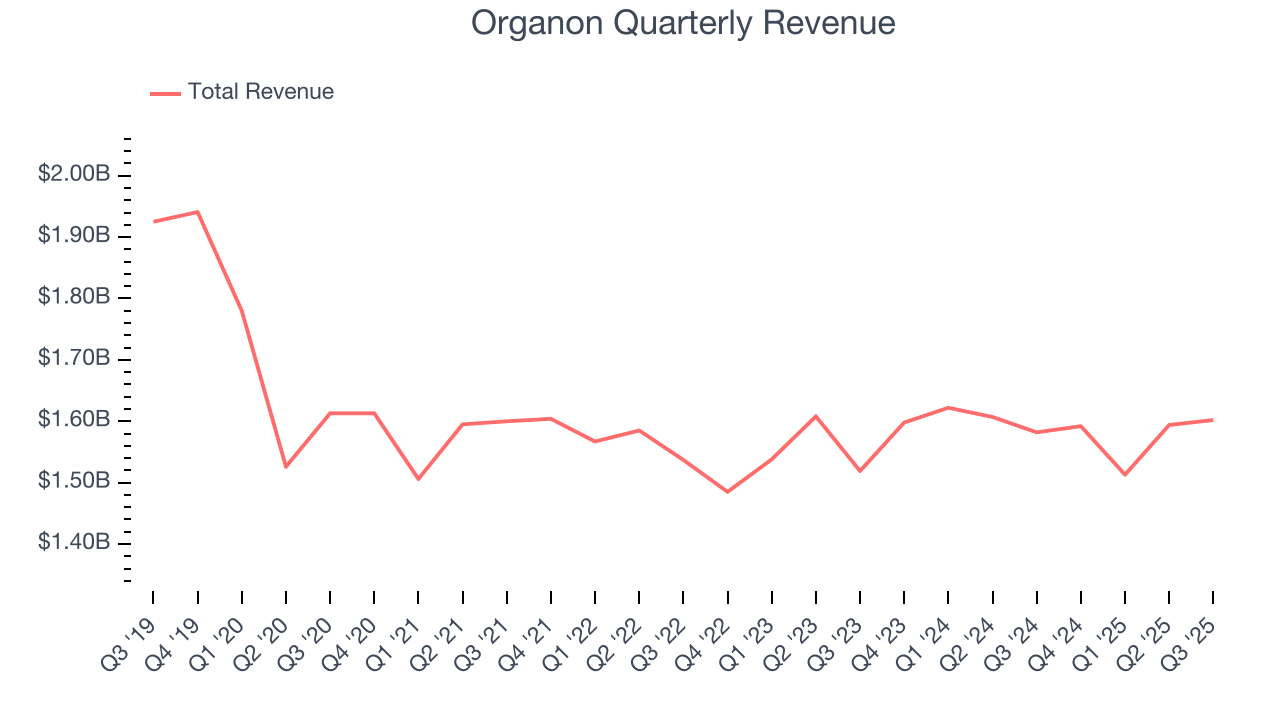
Long-term growth is the most important, but within healthcare, a half-decade historical view may miss new innovations or demand cycles. Organon’s annualized revenue growth of 1.2% over the last two years is above its five-year trend, but we were still disappointed by the results. 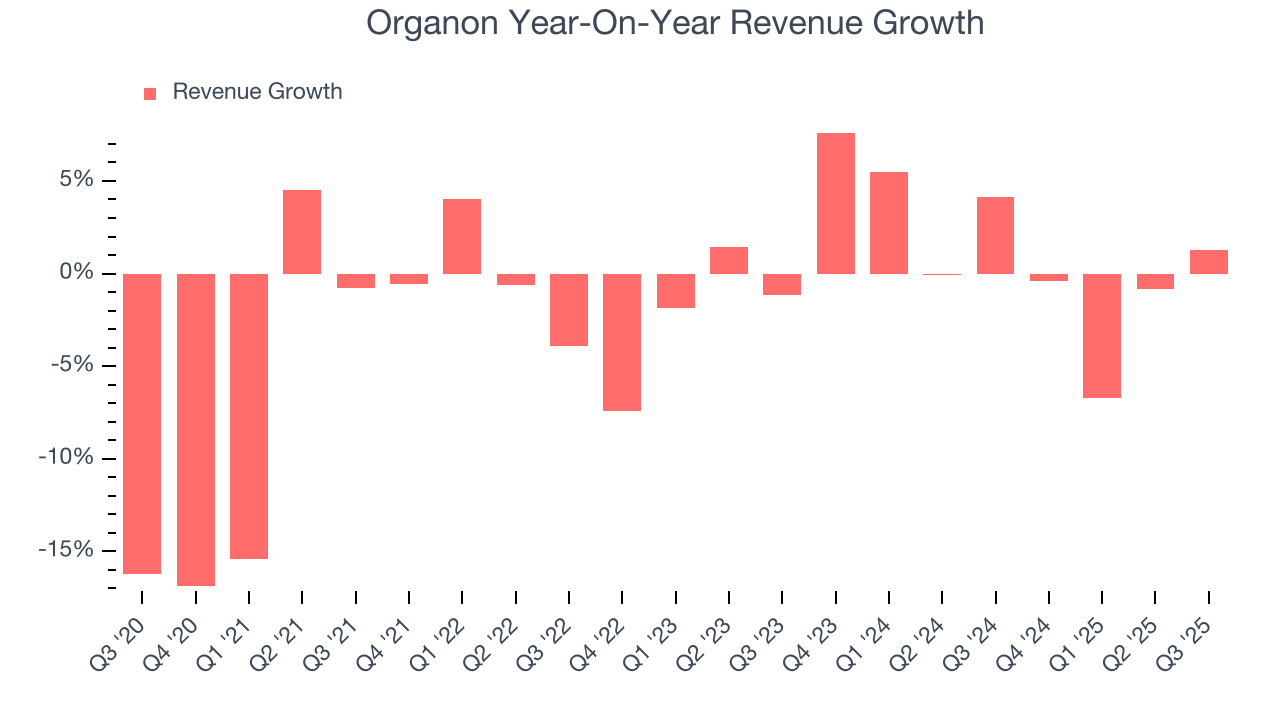
This quarter, Organon reported modest year-on-year revenue growth of 1.3% but beat Wall Street’s estimates by 2%.
Looking ahead, sell-side analysts expect revenue to remain flat over the next 12 months, a slight deceleration versus the last two years. This projection doesn't excite us and indicates its products and services will see some demand headwinds.
7. Operating Margin
Operating margin is one of the best measures of profitability because it tells us how much money a company takes home after subtracting all core expenses, like marketing and R&D.
Organon has been an efficient company over the last five years. It was one of the more profitable businesses in the healthcare sector, boasting an average operating margin of 23.3%.
Analyzing the trend in its profitability, Organon’s operating margin decreased by 14.3 percentage points over the last five years. The company’s two-year trajectory also shows it failed to get its profitability back to the peak as its margin fell by 3.3 percentage points. This performance was poor no matter how you look at it - it shows its expenses were rising and it couldn’t pass those costs onto its customers.
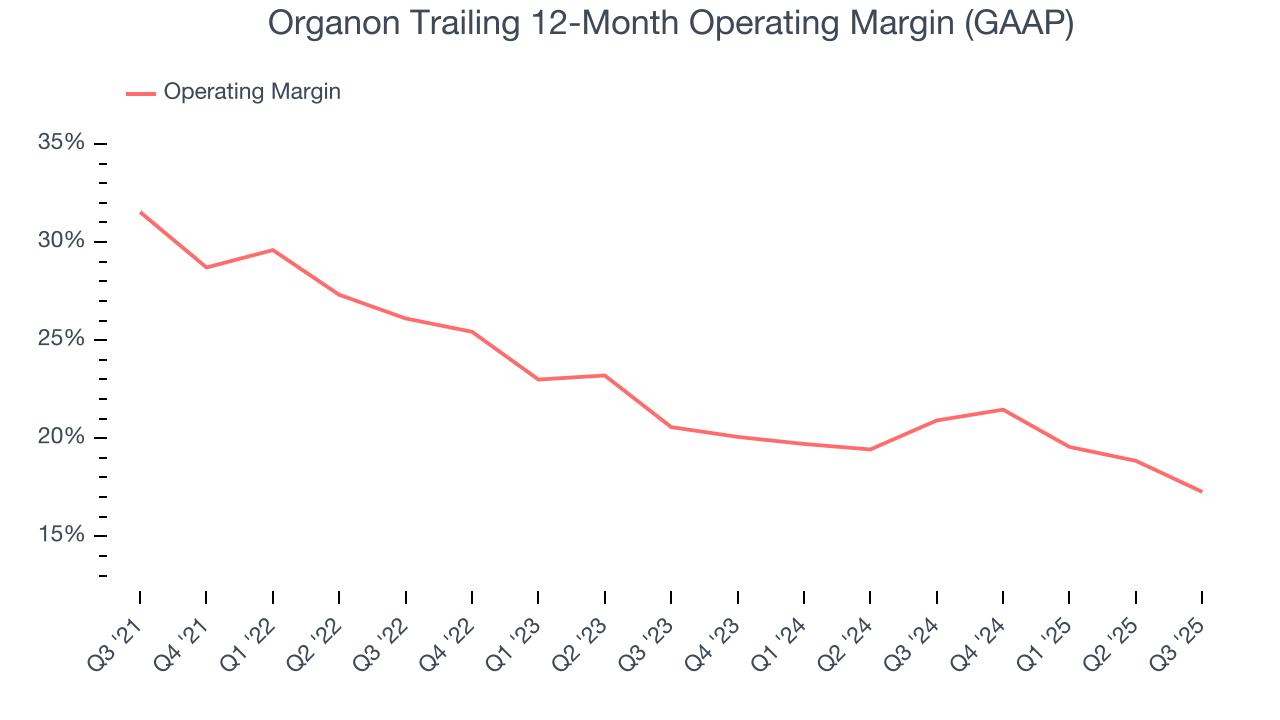
In Q3, Organon generated an operating margin profit margin of 15.2%, down 6.3 percentage points year on year. This contraction shows it was less efficient because its expenses grew faster than its revenue.
8. Earnings Per Share
Revenue trends explain a company’s historical growth, but the long-term change in earnings per share (EPS) points to the profitability of that growth – for example, a company could inflate its sales through excessive spending on advertising and promotions.
Sadly for Organon, its EPS declined by 17.6% annually over the last five years, more than its revenue. This tells us the company struggled because its fixed cost base made it difficult to adjust to shrinking demand.
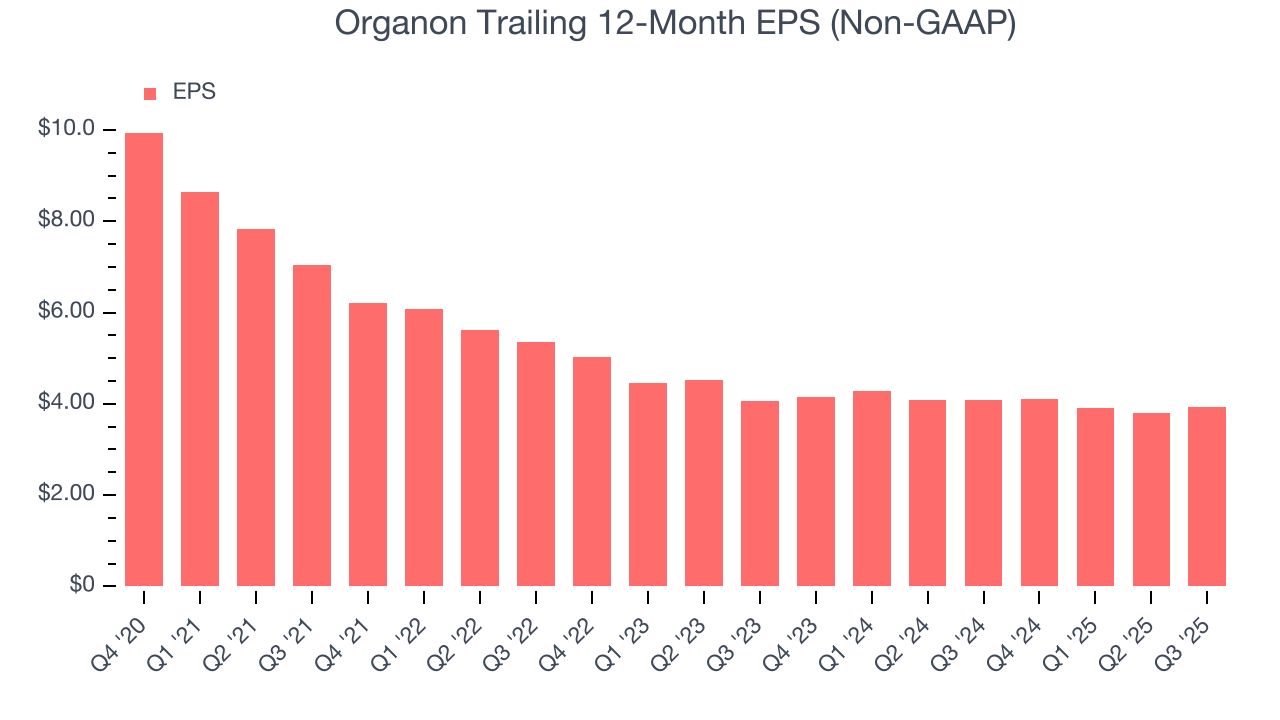
We can take a deeper look into Organon’s earnings to better understand the drivers of its performance. As we mentioned earlier, Organon’s operating margin declined by 14.3 percentage points over the last five years. This was the most relevant factor (aside from the revenue impact) behind its lower earnings; interest expenses and taxes can also affect EPS but don’t tell us as much about a company’s fundamentals.
In Q3, Organon reported adjusted EPS of $1.01, up from $0.87 in the same quarter last year. This print beat analysts’ estimates by 8.5%. Over the next 12 months, Wall Street expects Organon’s full-year EPS of $3.93 to shrink by 2.6%.
9. Cash Is King
Although earnings are undoubtedly valuable for assessing company performance, we believe cash is king because you can’t use accounting profits to pay the bills.
Organon has shown robust cash profitability, giving it an edge over its competitors and the ability to reinvest or return capital to investors. The company’s free cash flow margin averaged 15.2% over the last five years, quite impressive for a healthcare business.
Taking a step back, we can see that Organon’s margin dropped by 30.8 percentage points during that time. If its declines continue, it could signal increasing investment needs and capital intensity.
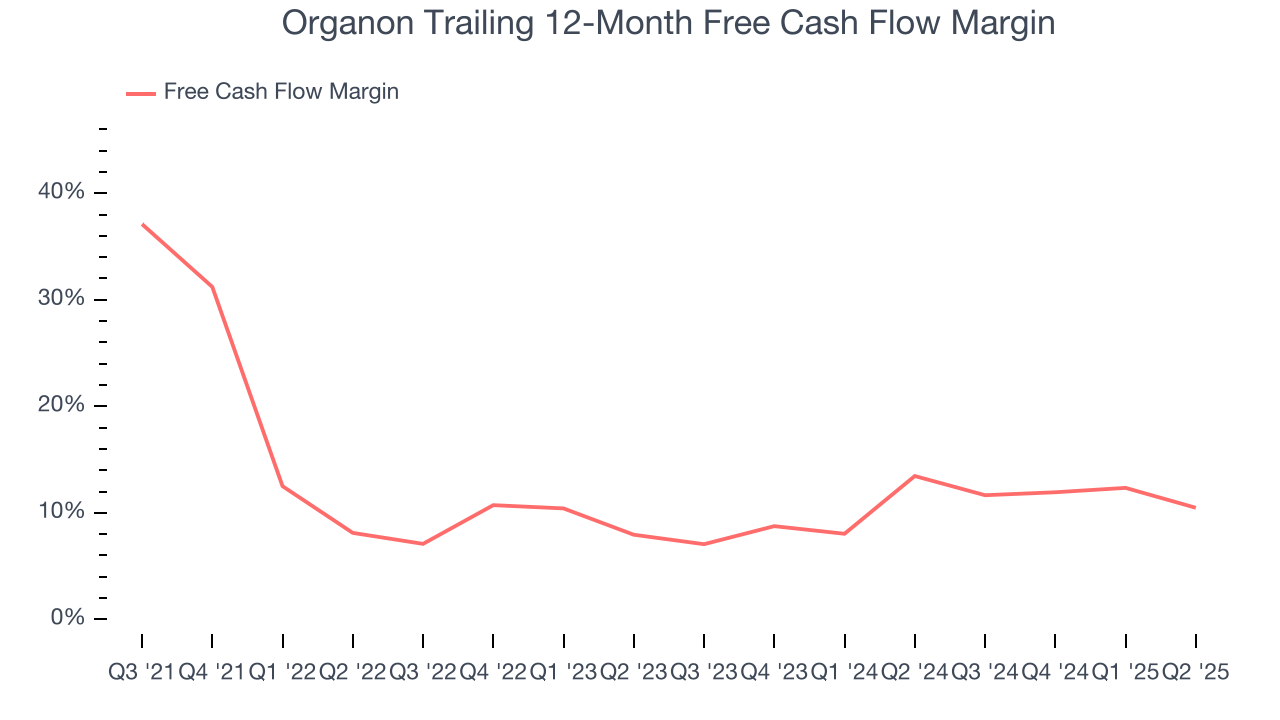
10. Return on Invested Capital (ROIC)
EPS and free cash flow tell us whether a company was profitable while growing its revenue. But was it capital-efficient? Enter ROIC, a metric showing how much operating profit a company generates relative to the money it has raised (debt and equity).
Although Organon hasn’t been the highest-quality company lately because of its poor revenue and EPS performance, it historically found a few growth initiatives that worked out well. Its five-year average ROIC was 17.7%, impressive for a healthcare business.
We like to invest in businesses with high returns, but the trend in a company’s ROIC is what often surprises the market and moves the stock price. Unfortunately, Organon’s ROIC has decreased over the last few years. We like what management has done in the past, but its declining returns are perhaps a symptom of fewer profitable growth opportunities.
11. Balance Sheet Assessment
Organon reported $672 million of cash and $8.83 billion of debt on its balance sheet in the most recent quarter. As investors in high-quality companies, we primarily focus on two things: 1) that a company’s debt level isn’t too high and 2) that its interest payments are not excessively burdening the business.

With $1.97 billion of EBITDA over the last 12 months, we view Organon’s 4.1× net-debt-to-EBITDA ratio as safe. We also see its $515 million of annual interest expenses as appropriate. The company’s profits give it plenty of breathing room, allowing it to continue investing in growth initiatives.
12. Key Takeaways from Organon’s Q3 Results
It was encouraging to see Organon beat analysts’ revenue expectations this quarter. We were also glad its EPS outperformed Wall Street’s estimates. Looking ahead, its full-year revenue guidance was reaffirmed. Zooming out, we think this was a decent quarter. The stock traded up 2.9% to $6.98 immediately after reporting.
13. Is Now The Time To Buy Organon?
Updated: December 24, 2025 at 11:16 PM EST
When considering an investment in Organon, investors should account for its valuation and business qualities as well as what’s happened in the latest quarter.
Organon isn’t a terrible business, but it isn’t one of our picks. For starters, its revenue has declined over the last five years, and analysts expect its demand to deteriorate over the next 12 months. And while its impressive operating margins show it has a highly efficient business model, the downside is its declining EPS over the last five years makes it a less attractive asset to the public markets. On top of that, its cash profitability fell over the last five years.
Organon’s P/E ratio based on the next 12 months is 1.8x. While this valuation is optically cheap, the potential downside is big given its shaky fundamentals. We're pretty confident there are more exciting stocks to buy at the moment.
Wall Street analysts have a consensus one-year price target of $9.36 on the company (compared to the current share price of $7.10).
Although the price target is bullish, readers should exercise caution because analysts tend to be overly optimistic. The firms they work for, often big banks, have relationships with companies that extend into fundraising, M&A advisory, and other rewarding business lines. As a result, they typically hesitate to say bad things for fear they will lose out. We at StockStory do not suffer from such conflicts of interest, so we’ll always tell it like it is.



